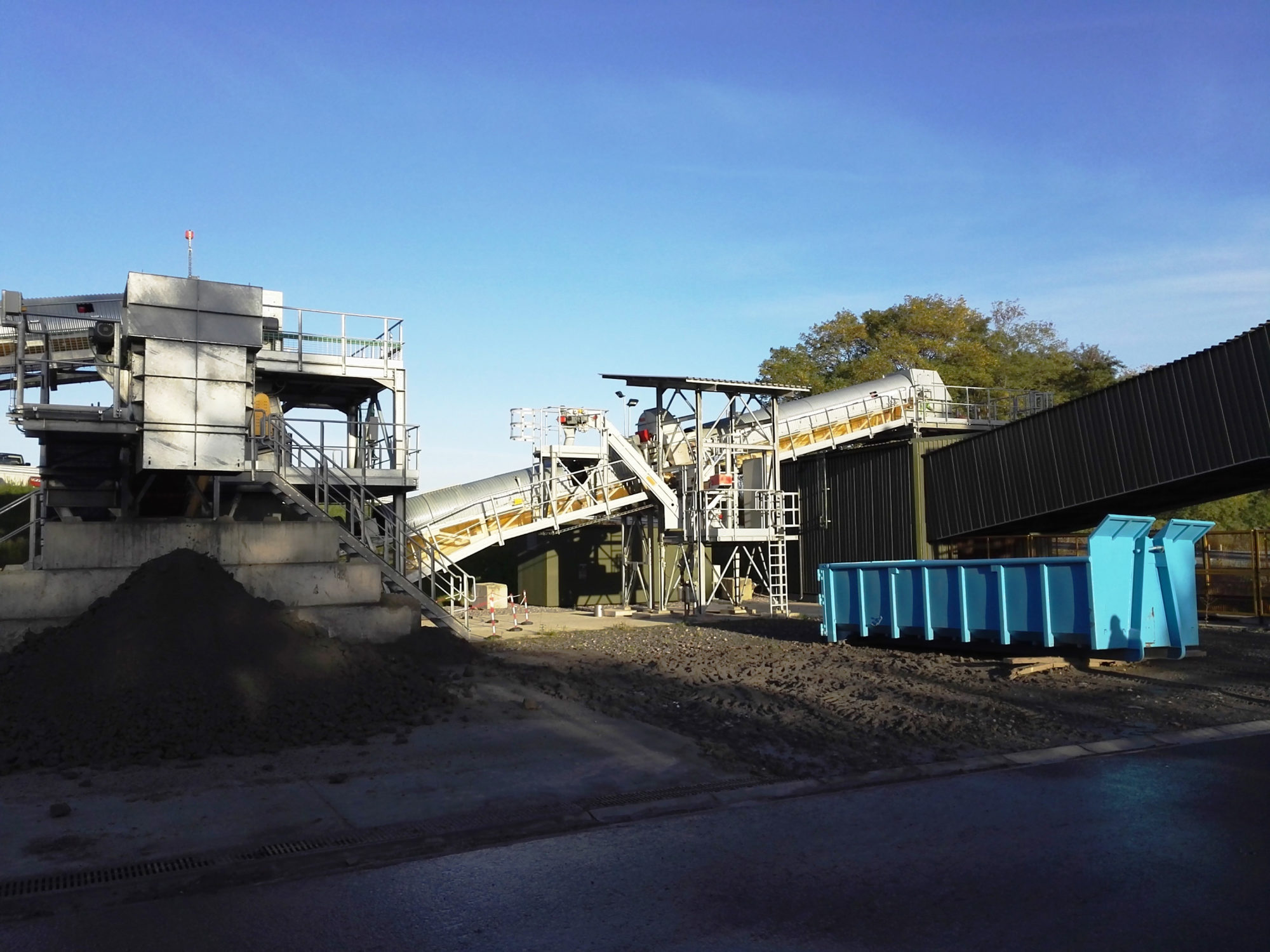In Wallonia, southern Belgium, the BEUMER Group Pipe Conveyor has been transporting fly ash quietly and dust-free as part of a project that will eventually see the residue from a former operating coal-fired power plant emptied to create a nature park.
The coal-fired power plant was in operation in the Belgian town of Flémalle, with the coal residues since landfilled on a fly ash stockpile.
With the stockpile to be entirely emptied and the terrain transformed into a nature park, a BEUMER Group Pipe Conveyor is being used to transport the fly ash to the Maas River for shipment.
BEUMER Group said: “The system has not only been adapted to operate along the steep mountains, but its enclosed design prevents the volatile material from coming into contact with the environment, while enabling a low-noise transport to the destination. This is important as the Pipe Conveyor passes over public motorways, railways and residential areas.”
This project has seen close cooperation between the BEUMER Group team and the customer, Tractebel Engineering (Group ENGIE), with the transport of the fly ash carried out in strict compliance with safety standards, taking into consideration environmental protection and the effect noise pollution has on local residents.
In Flémalle, less than 20 km away from Liège, there are about 2 million cu.m of residues of slates and stones or bottom ash in a fly ash stockpile within proximity of the coal-fired power plant. The stockpile is surrounded by a wall but, according to a study, it will over the long term represent a major threat for the local residents as it is displaced every year by several millimetres. In addition, the fly ash is an important additive in the manufacture of cement and concrete, with the material prepared to remove foreign substances such as wood or metal and the grain size reduced.
In a project that is the only one of its kind in Europe, the Belgian power supplier Elektrabel commissioned its subsidiary ENGIE to plan and install a processing plant. This could see the complete stockpile dissipated in the next 10 years, before the area is transformed into a nature park.
Pipe Conveyor: the economical alternative
Until then, the bulk material must be transported to the Maas River, around 2 km away.
The terrain leading to the river is very mountainous and the use of trucks would imply driving on public roads for long distances. This would have caused detours, slowed down transport times and raised costs, according to BEUMER Group. In addition, there would be the environmental effects of exhaust gases, dust and noise. The project lead opted for the BEUMER Group Pipe Conveyor as an economical alternative, the company said.
Vincent Ferlay, Managing Director for BEUMER Group France, said: “To be able to support companies like Tractebel Engineering with turnkey solutions, we have bundled our comprehensive expertise worldwide spanning various industries and established different Centres of Competence.
“It includes also our Pipe Conveyor. This international team of BEUMER Group bundles the know-how and supports the Sales Department and the Project Management. With Tractebel ENGIE, we have developed a solution adapted to the special routing and the ambient conditions.”
Dust-free conveying
The system supplier provided a conveying system with a centre distance of 1,800 m. “Due to the system design and the required system capacity, we have designed the Pipe Conveyor with a diameter of 260 mm,” Ferlay said.
The conveyor transports 300 t/h of fly ash at a speed of 2.3 m/s with, most importantly, enclosed transport to protect the environment from the dry and dusty material. This was an important requirement for the construction of this solution to be approved in the first place, according to Ferlay. “The project planning absolutely had to guarantee a safe transportation of the material,” he said. “The fly ash had to be prevented from exiting or falling on the ground, even in the smallest quantities.”
Noise emissions played an important role too: “We had to minimise the noise to an extremely low level,” Ferlay said.
The BEUMER Group team developed special sound-absorbing elements that were also used to enclose the Pipe Conveyor bridges. “Along certain line sections, the noise level had to be kept under 35 dB(A),” says Ferlay. This is also possible with special sound insulation, idlers and low-noise bearings.
The Pipe Conveyor transports fly ash across the open environment, navigates large inclines reliably and can be designed to accommodate tight curve radii, according to the company. Therefore only a few transfer towers are required, depending on the length of the conveyor, the terrain conditions and the curves.
The company said: “BEUMER Group can customise the conveying system to match the individual routing, thus protecting the environment and reducing the costs. The system supports are up to 10 m high. Durable conveyor belts guaranteeing tensile strength are used.”
The company also makes use of its dimensioning programs to determine the ideal belt design, enabling the analysis of tractive forces, as well as forces that occur due to acceleration and deceleration – always the company to consider the net weight of the belt and the transported material. This method also allows calculation of possible curve radii. “This is particularly important for ascending and descending conveyors,” Ferlay said.
Efficient ship loading
The system supplier provided the turnkey system and all necessary components such as filters, strippers and dedusting units. It also provided the engineering, automation and steel structure, as well as loading systems: excavators load the material into hoppers and on vibrating feeders. From there, it is transported to the feeding area of the Pipe Conveyor.
BEUMER Group installed a ship loader at the end of the conveyor line, which consists of a fixed boom with an extendable telescopic belt conveyor. This way the ships are loaded efficiently.
The ship loader is also equipped with a dedusting unit which keeps the process emission-free. Every day, 2,000 t of fly ash are loaded on a ship and from there transported to a cement plant.











